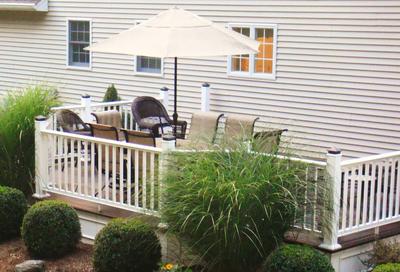
Take These 5 Steps To Winterize Your Outdoor Furniture

Unfortunately it’s time to pack up your outdoor oasis and get ready for the impending winter weather. To make sure your outdoor furniture stays in good condition through its hibernation period you want to clean and store it properly. Here are 5 tasks to tackle before temps dip any further:
1. Protect the fabric. Before you throw your cushions into storage for the winter, make sure to give them a good cleaning. Use a sponge and soap and water to wipe away any dirt and residue left from the summer. For any stains, spot clean with a stronger fabric cleaner. After you finish cleaning, make sure your fabrics are completely dry before you store them. You don’t want to pull out your cushions and umbrella next summer to find them covered in mold and mildew, so keep them dry! To be extra safe, you might want to spray them with a protective sealant before storing them in a drawstring trash bag.
2. Clean your furniture. Grab a soft bristled, dry brush to whisk away any dirt on your furniture. Make sure to pay special attention to the legs and feet of your pieces. After the loose dirt is gone, take a sponge and some soap and wipe down the furniture. Dish soap is fine to use on wicker, wood, wrought iron, mesh and plastics. If your metal furniture has rust spots, you can remove the rust with a wire brush. After this, hose them down to get rid of all of the soap. Let your furniture dry completely before stacking them away in your garage or shed to avoid mold and mildew growth over the winter.
3. Cover your furniture. If you don’t have enough storage space or your pieces of furniture are too big to store, invest in some patio covers. Before you buy a cover, make sure to measure your furniture so that there are no gaps that will let snow or water get in. For flat surfaces you can place a ball or planter underneath the cover so that the water and snow won’t pool on top.
4. Coat your furniture. Consider doing this for larger furniture pieces that you can’t move indoors or furniture that was a big investment. You can coat wood or wicker pieces in a water sealant to protect them from freezing snow and rain that could potentially crack and damage them. A sealant will also protect wood from rotting and warping. For metal furniture, look for a rust-inhibiting sealant.
5. Empty your planters. With a brush, sweep out soil and dirt from planters that will be stored empty through the winter. Next, wash them down with soap and water. Make sure they are fully dry before you stack and store them. If you don’t have room in dry storage and you decide to keep them outside, flip them over so that water and snow does not collect and freeze inside the planter.Be aware that freezing temperatures may crack terracotta if left outside.